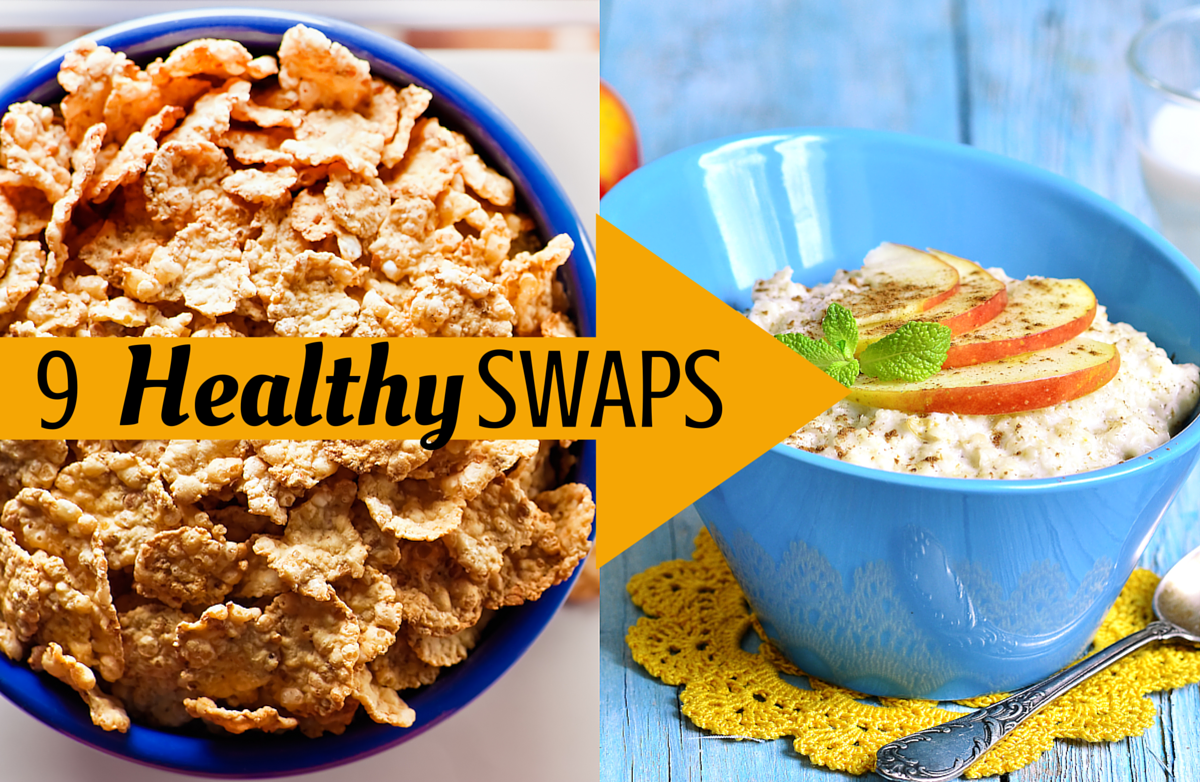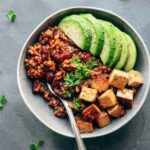Embark on a culinary adventure, freeing your kitchen from soy and unlocking a world of vibrant flavors! Imagine effortlessly swapping soy-laden ingredients for delicious alternatives, transforming everyday meals into exciting, healthy creations. This guide unveils the secrets to creating a soy-free pantry, brimming with versatile ingredients ready to inspire your next culinary masterpiece. Discover simple, quick recipes that are not only soy-free but also adaptable to various dietary needs, ensuring everyone can enjoy the delicious results.
We’ll explore a comprehensive range of soy-free substitutes, comparing their nutritional profiles and culinary applications. Learn how to build a well-stocked soy-free pantry, mastering proper storage techniques to maximize freshness. From weeknight dinners to delightful baked goods, we’ll guide you through easy-to-follow recipes, offering variations to suit your preferences. Finally, we’ll delve into advanced cooking techniques that elevate your soy-free dishes, creating complex and satisfying flavor profiles that will tantalize your taste buds.
Soy-Free Alternatives

Embarking on a soy-free journey doesn’t mean sacrificing flavor or culinary creativity. A wide array of delicious and nutritious alternatives exist, readily available to replace soy-based ingredients in your favorite dishes. This section explores these substitutes, highlighting their unique characteristics and culinary applications. We will delve into specific swaps, comparing nutritional profiles, and offering visual guidance for incorporating these alternatives into your cooking.
Soy-Free Alternatives for Common Soy Ingredients
Soy-based products are prevalent in many cuisines, but finding suitable replacements is straightforward. Several ingredients offer comparable functionality and taste profiles, allowing for seamless transitions in your recipes.
Here’s a list of soy-free alternatives for common soy-containing ingredients:
- Soy Sauce: Coconut aminos offer a similar salty, umami flavor with a slightly sweeter profile. Tamari (wheat-based, but soy-free options exist) provides a richer, more robust taste. Liquid aminos derived from fermented vegetables provide a lighter, less intense umami flavor.
- Soy Milk: Almond milk, oat milk, rice milk, cashew milk, and coconut milk are all popular and readily available alternatives. Each offers a distinct flavor and texture, influencing the final product differently. For example, almond milk is generally thinner and nuttier than oat milk, which tends to be creamier and slightly sweeter.
- Tofu: Firm tofu can be replaced with tempeh (fermented soybeans, but some brands offer soy-free versions), seitan (wheat gluten), or hearts of palm for a similar texture in savory dishes. For creamy applications, silken tofu can be substituted with blended cashews, silkened chickpeas, or mashed potatoes.
- Soy Lecithin: Sunflower lecithin, a common emulsifier found in many processed foods, serves as an excellent soy-free replacement.
Nutritional Comparison of Soy and Soy-Free Alternatives
Understanding the nutritional differences between soy-based ingredients and their alternatives is crucial for making informed dietary choices. The following table provides a comparative overview. Note that nutritional values can vary based on brand and processing methods.
| Ingredient | Protein (g/100g) | Fat (g/100g) | Fiber (g/100g) |
|---|---|---|---|
| Soy Milk (unsweetened) | 3-4 | 2-4 | 0-1 |
| Almond Milk (unsweetened) | 1-2 | 2-5 | 0-1 |
| Oat Milk (unsweetened) | 2-4 | 1-3 | 1-2 |
| Tofu (firm) | 8-10 | 5-10 | 1-2 |
| Tempeh | 18-20 | 15-20 | 5-7 |
| Seitan | 25-30 | 1-3 | 1-2 |
Visual Guide to Soy-Free Ingredient Applications
Imagine a vibrant culinary landscape showcasing the versatility of soy-free ingredients.
Coconut aminos drizzle beautifully over stir-fried vegetables, adding a rich, salty-sweet depth. Picture vibrant green broccoli florets glistening with the dark amber liquid, complemented by the crunch of toasted sesame seeds.
Oat milk steams beautifully into a creamy, comforting latte. Envision the frothy, tan-colored milk art swirling atop the rich brown coffee, its subtle sweetness enhancing the coffee’s bitterness.
Hearts of palm, marinated in a zesty lime dressing, mimic the texture of tofu in a refreshing summer salad. Picture crisp, white hearts of palm nestled amongst vibrant red tomatoes and crunchy cucumbers, the bright citrus dressing creating a tangy counterpoint.
Cashew cream, smooth and luxurious, forms the base of a decadent vegan cheesecake. Imagine a rich, pale ivory-colored cheesecake, topped with a cascade of fresh berries, its creamy texture a delightful contrast to the tart fruit.
Soy-Free Pantry Essentials
Building a robust soy-free pantry is the cornerstone of successful soy-free cooking. A well-stocked kitchen brimming with versatile alternatives empowers you to create delicious and nutritious meals without relying on soy products. This section details essential soy-free ingredients, their uses, and optimal storage techniques, enabling you to confidently navigate the world of soy-free cuisine.
Essential Soy-Free Ingredients: A Comprehensive Shopping List
This categorized shopping list provides a foundation for your soy-free kitchen. Remember to adjust quantities based on your dietary needs and cooking habits. The versatility of these ingredients allows for a wide array of culinary creations, minimizing the need for numerous specialized products.
- Grains: Quinoa (a complete protein), brown rice, oats (certified gluten-free if needed), amaranth, millet, cornmeal.
- Legumes: Lentils (red, green, brown), chickpeas, black beans, kidney beans, pinto beans (canned or dried).
- Dairy Alternatives: Unsweetened almond milk, coconut milk (full-fat and light), cashew milk, oat milk (certified gluten-free if needed), nutritional yeast (for cheesy flavor).
- Nuts & Seeds: Almonds, cashews, walnuts, pecans, sunflower seeds, chia seeds, flaxseeds (ground).
- Other Essentials: Olive oil, coconut oil, avocado oil, apple cider vinegar, maple syrup or other natural sweeteners (agave, honey), spices (turmeric, cumin, paprika, etc.), nutritional yeast, tamari (wheat-free soy sauce alternative).
Versatility of Key Soy-Free Ingredients
Many soy-free staples are incredibly versatile, forming the basis for countless dishes. For instance, quinoa can be used as a breakfast cereal, a side dish, or an ingredient in salads and bowls. Chickpeas can be roasted for a snack, mashed into hummus, or added to soups and stews. Almond milk serves as a base for smoothies, lattes, and even baking. The possibilities are truly endless, allowing for creative and diverse meal planning.
Proper Storage of Soy-Free Ingredients
Proper storage is critical to maintain the freshness and extend the shelf life of your soy-free ingredients. Following these guidelines will help minimize waste and ensure the quality of your food.
- Grains & Legumes (Dried): Store in airtight containers in a cool, dark, and dry place. Dried beans and grains can last for many months, sometimes even years, if stored properly.
- Nuts & Seeds: Store in airtight containers in the refrigerator or freezer to maintain freshness and prevent rancidity. Refrigeration is especially important for ground flaxseeds and chia seeds.
- Dairy Alternatives: Refrigerate unopened and opened containers. Check expiration dates and use within the recommended timeframe. Some shelf-stable alternatives exist, but always refer to the product’s label.
- Oils: Store oils in cool, dark places away from heat and direct sunlight to prevent oxidation and rancidity.
- Spices: Store spices in airtight containers in a cool, dark place. Proper storage can maintain their potency and flavor for extended periods.
Easy Soy-Free Recipes
Transforming your kitchen into a soy-free haven doesn’t mean sacrificing delicious, quick meals. These three simple recipes are perfect for busy weeknights, offering flavorful options that are easily adaptable to various dietary needs. Each recipe prioritizes fresh ingredients and straightforward preparation, ensuring a satisfying meal without extensive cooking time.
Quick Soy-Free Recipes
Below are three simple and quick soy-free recipes, perfect for busy weeknights. Each recipe includes a detailed ingredient list and step-by-step instructions, along with variations to cater to different dietary needs.
| Recipe | Ingredients | Instructions | Preparation Time | Variations |
|---|---|---|---|---|
| One-Pan Lemon Herb Roasted Chicken and Veggies |
|
|
40 minutes |
|
| Speedy Shrimp Scampi with Zucchini Noodles |
|
|
15 minutes |
|
| Quick Black Bean Burgers |
|
|
20 minutes |
|
Mastering soy-free cooking isn’t just about eliminating an ingredient; it’s about embracing a world of culinary possibilities. By understanding the versatility of soy-free alternatives and employing simple techniques, you can create flavorful and nutritious meals that are both satisfying and exciting. This journey has equipped you with the knowledge and confidence to transform your kitchen into a haven of delicious, soy-free creations. So, go forth and experiment, unleashing your inner chef and savoring the delightful rewards of your culinary exploration!
Answers to Common Questions
What are the common signs of a soy allergy?
Common soy allergy symptoms include hives, itching, swelling, digestive upset (nausea, vomiting, diarrhea), and in severe cases, anaphylaxis.
Can I use soy-free alternatives in baking without affecting the texture?
Yes, but careful substitution is key. Some alternatives might require adjustments to liquid amounts or the addition of binding agents to achieve the desired texture. Experimentation is encouraged!
Are all soy-free products automatically gluten-free?
No, soy-free doesn’t automatically mean gluten-free. Always check product labels to ensure both soy and gluten are absent if needed.
Where can I find soy-free products?
Soy-free products are increasingly available in most grocery stores, particularly in health food sections and online retailers specializing in allergen-free foods.


